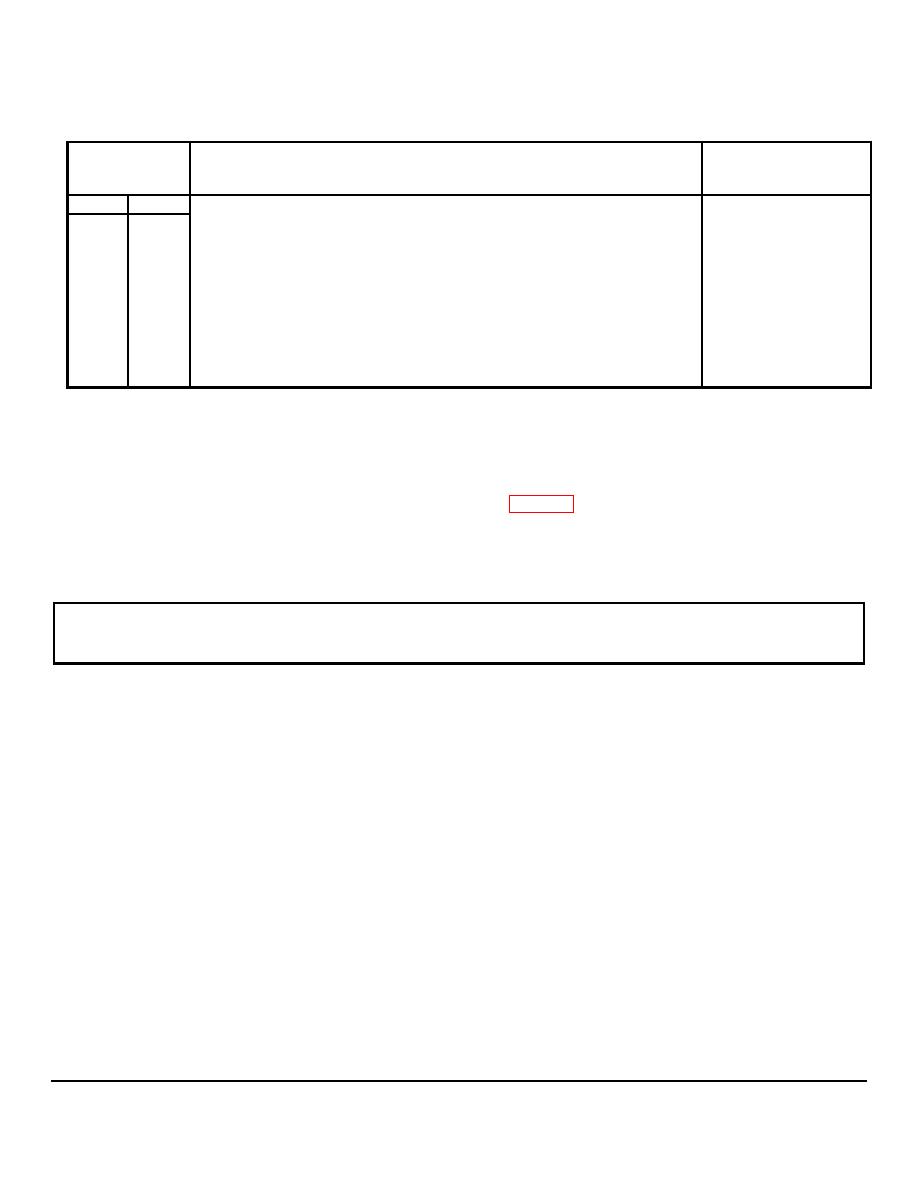 |
|||
|
|
|||
|
|
|||
| ||||||||||
|
|
 Table 3-2. Operator/ Crew
Preventive Maintenance Checks and Services
D-Daily
W-Weekly
Time required 1.1
Time required .3 hrs.
Interval
Item to be inspected
Work
and
procedure
time
sequence No.
M/H
D
W
1
AIR SHROUD
.1
Inspect air shrouds for insecure mounting, trends, or cracks. Inspect
flywheel vanes for cracks or breaks.
2.
FUEL STRAINER
.1
Inspect for loose mounting, leaks, and cracked bowl. Drain water and
dirt from strainer.
3.
BATTERY
.1
Tighten loose cables and mountings.
Remove corrosion.
Fill
electrolyte to 3/8 in. above plates. In freezing weather run engine a
minimum of one hour after adding water. Clean vent hole in filler cap.
Section III. TROUBLESHOOTING
do not correct the malfunction, report the trouble to
3-5. General
organizational maintenance.
This section describes malfunction which might occur
3-6. Operator / Crew Troubleshooting
during operation of the pump assembly along with the
See table 3-3 for troubleshooting the pump unit.
test or inspection given and the corrective action taken.
Refer to TM 5-2805-259-14 for engine troubleshooting
Only those malfunctions which are within the
instructions.
maintenance scope of the operator / crew are included
in this chart. If the corrective actions given in this chart
Table 3-3. Troubleshooting
MALFUNCTION
TEST OR INSPECTION
CORRECTIVE ACTION
1
PUMP ASSEMB3LY FAILS TO PRIME
Step 1. Check to see if pump has been primed.
Prime pump, refer to figure 2-2 (1).
Step 2. Check to see if suction lift is too high.
Place the pump assembly closer to level of supply if possible.
Step 3. Check to see if engine is running at rated speed.
Increase engine speed.
2.
PUMP FAILS TO DELIVER CAPACITY
Step 1. Check to see if suction lift is too high.
Place the pump assembly closer to level of supply if possible.
Step 2. Check to see if discharge head is too high.
Reduce total head.
Step 3. Check to see if engine is running at rated speed.
Increase engine speed.
Step 4. Check to see if suction or discharge valve is partially closed.
Adjust valves (fig. 2-1).
3.
NOISY PUMP OPERATION
Check for proper installation.
Relocate pump assembly.
4.
PUMP OVERHEATS
Check to see if suction or discharge valves are closed.
Open valves (fig. 2-2).
5.
NOT ENOUGH PRESSURE
Step 1. Check to see if engine is running at rated speed.
Increase engine speed (fig. 2-1).
Step 2. Check to see if valves are fully opened.
Open valves (fig. 2-2).
Note.
Suction and Discharge hoses, valves, fittings and connections must be free of leaks to attain rated capacities
3-4
|
|
Privacy Statement - Press Release - Copyright Information. - Contact Us |